
Choosing a patio umbrella is about more than matching your cushions. It’s about getting the right shade in the right spot, so everyone can actually enjoy the outdoors. This article focuses on the three decisions that shape your patio’s experience: umbrella style, size and canopy shape. If you’re curious about base options, materials and fabrics, wind performance or must-have accessories, you’ll find those explored in related sections as you read.
Style – Market vs. Cantilever Umbrellas
Your umbrella’s structure will shape not just how much shade you get but how you arrange your space and how you use it all season. Market and cantilever umbrellas each shine in different scenarios. Here’s how to choose the best fit:
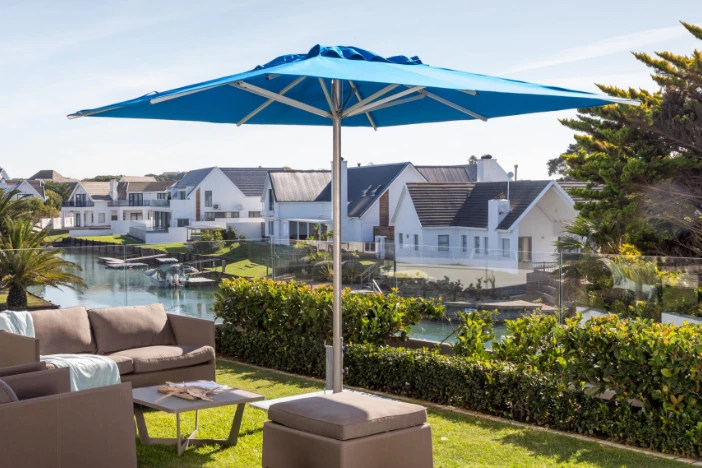
Market Umbrella
Market umbrellas are the patio classic. A central pole runs straight up through the middle – often through a hole in your dining table. They’re familiar, easy to relocate and work well for setups where gathering around a table is the whole point. You’ll find them everywhere from bistro patios to casual family backyards.
- Best for cozy dining tables, small patios, classic garden setups or anyone who likes to move things around seasonally.
- Central pole means seating naturally gathers around it, although it does claim the “middle seat.”
- For tips on fabric selection and durability, see our materials & fabrics guide for details.
Expert insight
Frankford Umbrellas – “Market umbrellas are ideal when shade needs to stay simple, centralized and always available.”
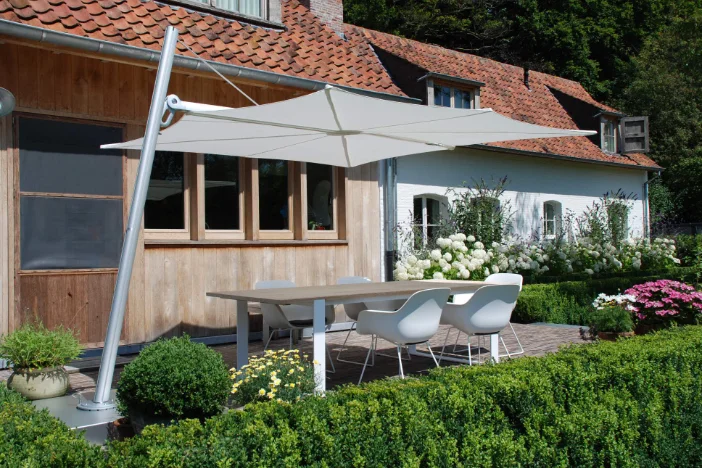
Cantilever (offset) Umbrella
Cantilever umbrellas put the support pole and base totally out of the way, suspending the canopy overhead. This leaves your furniture and guests free to sprawl, reconfigure or shift the entire shade as the sun moves. If you want total flexibility, a cantilever delivers. Just be ready for a heavier base and a little more setup.
- Ideal when you’re shading a large lounge, want walkways clear or have an ever-changing social scene outdoors.
- The open base makes it easy to cover sectionals, play zones, pool edges or even hot tubs, without anything in the way beneath.
- Mounting and support for larger cantilevers are covered in our bases & mounts guide.
Expert insight
Tuuci – “Offset canopies bring freedom to design, especially on open patios where the space and sun are always changing.”
If your space gets a lot of reflected sun or light bounces in from light-colored patios or nearby pools, keep in mind that UV rays can sneak under from the sides, especially with smaller or classic center-pole umbrellas [Slevin 2014].

Size – Measure Your Real-Life Space
Getting umbrella size right is how you make sure everyone stays comfortable, no matter how the sun or furniture moves throughout the afternoon.
- Always start by measuring your seating or dining area, then add 2 to 2.5 feet of extra coverage on all sides. This gives you room to spare when someone pulls out their chair or the sun swings around.
- For a breakfast spot or tiny terrace, a 6–7′ canopy keeps breakfast or a book break pleasant. Four people gathered for a meal? 7–9′ is the sweet spot. Entertaining big? Look for 10–14′ – and really visualize how much of your patio you want in the shade.
- Many people find an overhead visual like a table chart or diagram highlighting seat footprints. This makes things easier to picture (tip – trace it on the ground with a rope or garden hose).
Examples of suggested patio umbrella sizes
| Table Size | Canopy Size | Shade Area | What it Covers |
|---|---|---|---|
| up to 30″ | 6-7′ | 36-49 ft2 | 2 Seat Bistro |
| up to 36″ | 7-8′ | 49-84 ft2 | 4 Seat Dining / Lounge Chair or Chaise |
| up to 48″ | 8-9′ | 64-81 ft2 | 4-6 Seat Dining / Small Sofa |
| up to 60″ | 9-10′ | 81-100 ft2 | 6 Seat Dining / Small Lounge |
| up to 72″ | 10-11′ | 100-121 ft2 | 6-8 Seat Dining / Medium Lounge |
| up to 96″ | 12-13′ | 144-169 ft2 | 8-10 Seat Dining / Large Lounge |
| up to 108″ | 13-14′ | 169-196 ft2 | 10+ Seat Dining / Extra Large Lounge |
It’s tempting to go by catalog images but your best bet is checking our umbrella sizing walkthrough for more examples and measurement tricks.
Expert insight
Umbrosa – “There’s nothing better than sketching or using string to map out the shade in real space. It’s always more accurate than trying to estimate from a photo.”
And if you’re thinking about cranks, tilts or easier daily operation, explore the features & accessories guide to see all your options for making big umbrellas effortless.

Shape – Match Shade to Space
Canopy shape changes the amount and feel of your shade. Plus, it impacts how your umbrella stands up to wind and works with your furniture plan.
- Round – The go-to for timeless, balanced shade. It’s comfortable for round tables, small garden nooks or a spot where you like people to gather and chat. Round umbrellas keep the vibe casual and versatile.
- Square – Pure efficiency. Square canopies provide edge-to-edge cover and are great for modern layouts with boxed sectionals or patios tight on space. If every inch counts, this shape shines.
- Rectangular – The favorite for long banquet tables, rows of loungers or when you need serious shade along a whole edge of your patio. Rectangles give even coverage in places round or square can’t always reach.
Great for intimate gatherings, classic decor or patios with lots of movement. If you’ve ever wished your round umbrella reached the corners, a square makes a visible difference. For family reunions, pool parties or those “everyone at one table” dinners, rectangles are hard to beat.
Expert insight
Woodline – “Start with the layout of your furniture. Rectangles for rows, squares for modular or L-shaped setups, round for a classic, everyone-gathers-here feel.”
If you suspect your patio’s exposed or the wind gets tricky, the way your canopy shape and height affect gusts is important. Our wind performance overview details what shapes and styles fare best.
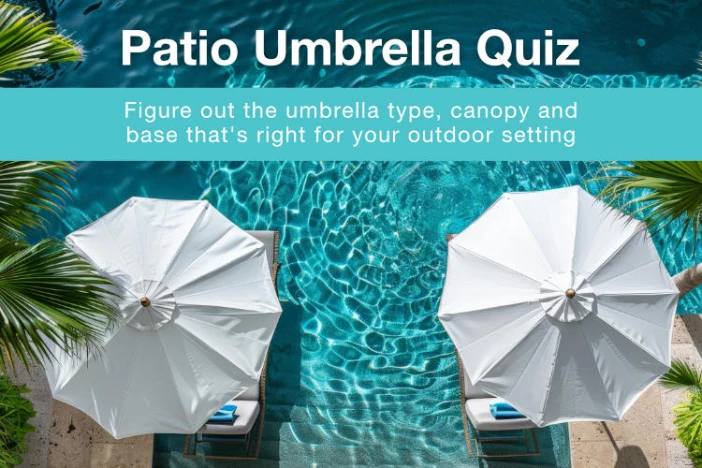
Large Umbrellas – More Shade, Smart Planning
Thinking big, for a group that grows every weekend? Larger umbrellas (10–14′ and up) transform an outdoor space but take a little know-how.
- They’ll need more support – heavy bases, sometimes permanent mounting and lots of elbow room for safe opening and rotation.
- The canopy might clear nearly your whole deck, so make sure no beams, string lights or tree branches are blocking the action.
- Larger offset umbrellas often include cranks or even hydraulic assists to handle all that weight. Check for those if you’ll be opening and closing often.
Expert insight
Shademaker – “Large umbrellas deliver unbeatable group comfort, but only when you measure twice and match your install to the scale. Serious shade requires planning and the right mounting – don’t underestimate their footprint.”
If you’re thinking through anchoring options, permanent mounts or base upgrades, the bases & mounts guide will answer all your questions.
No single umbrella fits every patio or every lifestyle, but getting the style, size and canopy shape right will set you up for years of shade and enjoyment outdoors. As you picture your space and compare options, remember to measure twice, consider how your guests will gather and think about how sun moves through your yard. And whenever you’re ready to go deeper on materials and fabrics, base choices and mounting, feature options, wind performance or maintenance and cleaning, just hop over to any of those dedicated guides.
Frequently Asked Questions – Patio Umbrellas – Types, Sizes & Shapes
What is a market umbrella?
A “market umbrella” is what most people think of when they picture an outdoor umbrella. It features a center pole and its canopy typically has an octagon or rounded shape. Some canopies include vents to allow airflow to keep the area below cool and help stabilize the umbrella in high winds.
What is the standard size sun umbrella?
There is no such thing as a “standard size” patio umbrella. It just depends on your own specific environment.
As a rule of thumb, an outdoor umbrella should extend 2-2 1/2 feet beyond the edge of the area you wish to shade. Smaller umbrellas (10 feet diameter and less) are usually market style, while larger models (12 feet diameter and more) are often offset or cantilever style.
References
- Slevin, T. (Ed.). (2014). Sun, Skin and Health. Csiro Publishing.

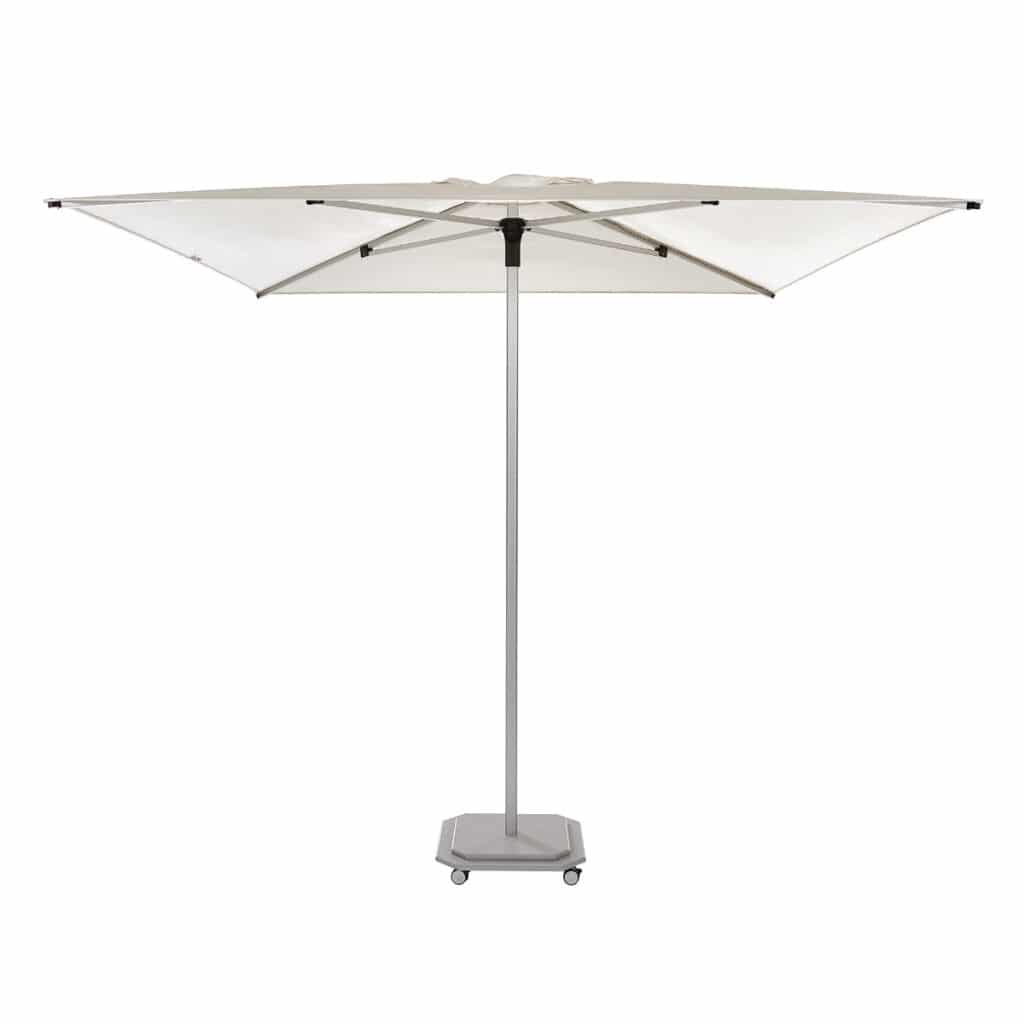

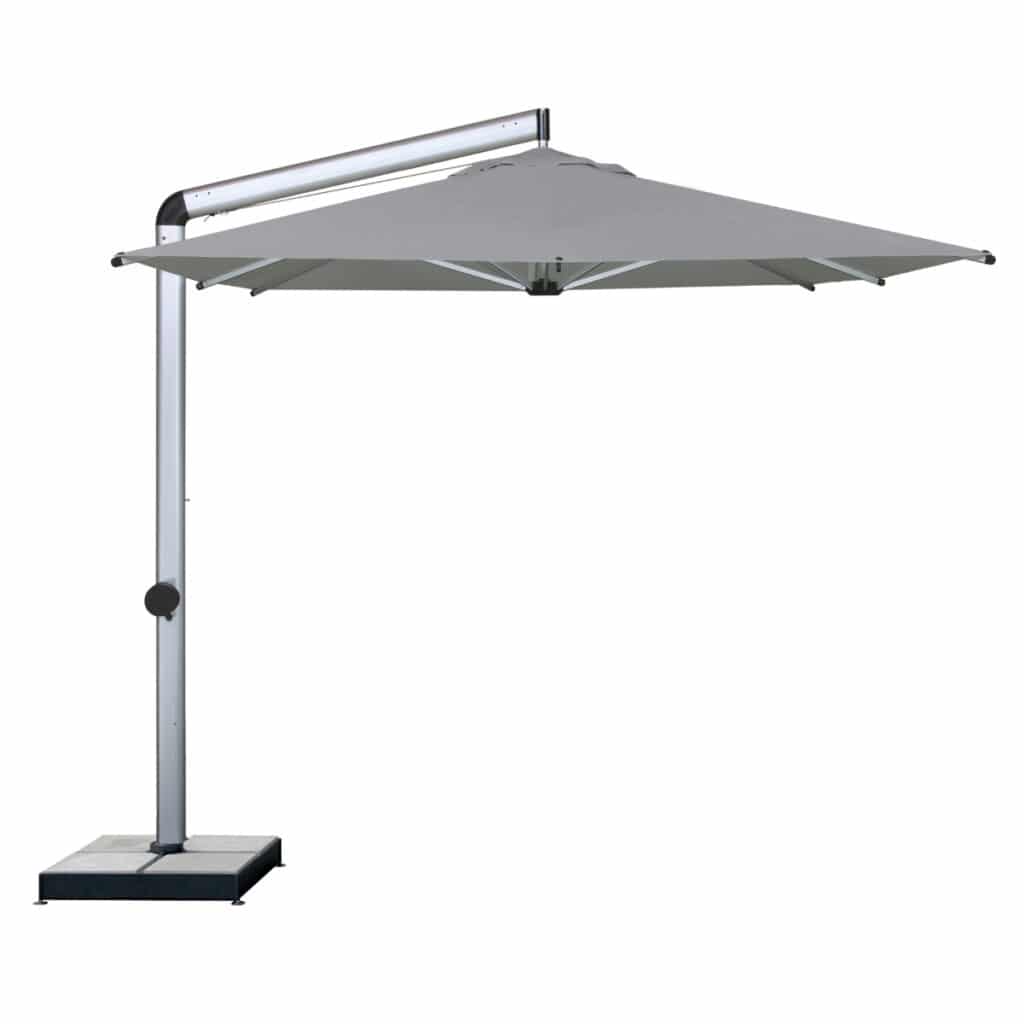
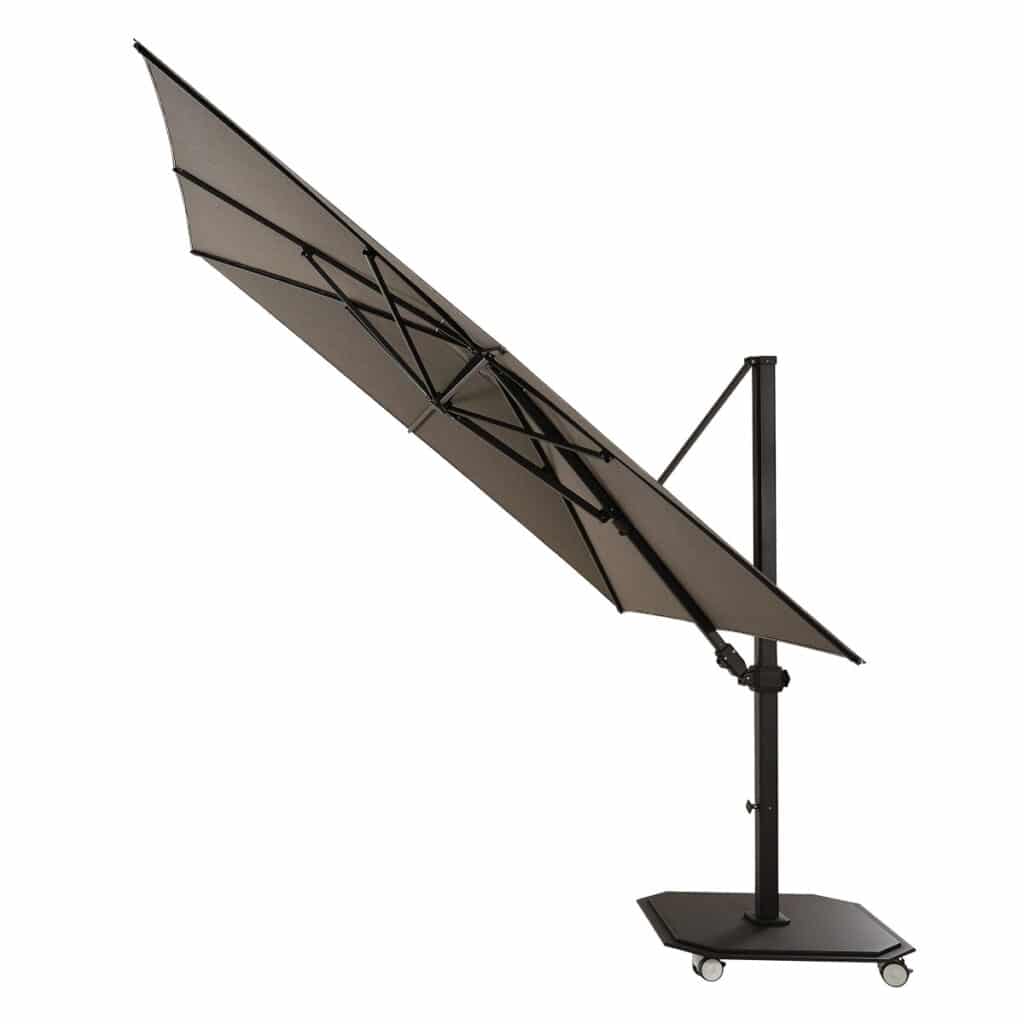




Leave a Reply